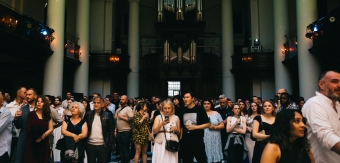Artistic appropriation, the practice of borrowing or recontextualizing existing images or ideas in new works of art, has a long and controversial history. From Marcel Duchamp's "readymades" to Andy Warhol's pop art, artists have long been fascinated by the power of appropriation to subvert and critique traditional notions of authorship and originality.
As a professional artist for over a decade, I have always been fascinated by the intersection of art and technology. The rise of AI-generated art has been a topic of great interest and controversy in the art community, and I felt the need to delve deeper into the subject and explore both sides of the argument. Through researching and writing this article, I hope to provide insight and facilitate discussion on the ethics and implications of AI-generated art.
In this article, we will explore the history and controversy of artistic appropriation, from Roy Lichtenstein's comic book-inspired paintings to Richard Prince's rephotographed advertisements. We will also examine the ways in which AI is changing the landscape of art and creativity, and the ethical and philosophical implications of using machines to generate art.
I. The History of Artistic Appropriation
Artistic appropriation has a long and varied history, dating back at least to the Dadaist movement of the early 20th century. Throughout its history, appropriation has been used to challenge dominant cultural narratives and to subvert traditional notions of authorship and originality. However, with the rise of AI art and digital technologies, the issue of appropriation has become more complex than ever before.
Appropriation can involve the use of existing images, objects, sounds, or other materials and can be done in a variety of mediums, including painting, sculpture, photography, and digital art. While appropriation has been a subject of controversy and debate in the art world, it has also been recognized as an important and legitimate form of artistic expression.
Here is a list of some notable artists who have utilized artistic appropriation in their work:
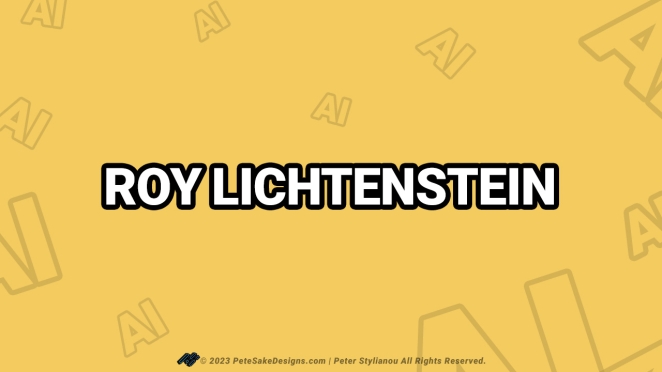
II. Roy Lichtenstein and Comic Book Art
One of the most famous examples of appropriation in art is the work of Roy Lichtenstein. Lichtenstein was an American pop artist who rose to prominence in the 1960s with his paintings that mimicked the style of comic book illustrations. Lichtenstein's works often featured bold lines, primary colors, and speech bubbles, and were intended to mimic the commercial aesthetic of mass-produced comics.
However, many of his paintings were based on actual comic book images, which he traced and then reproduced with slight alterations. Critics have argued that this amounts to little more than copying and that Lichtenstein's work, therefore, lacks originality and artistic merit.
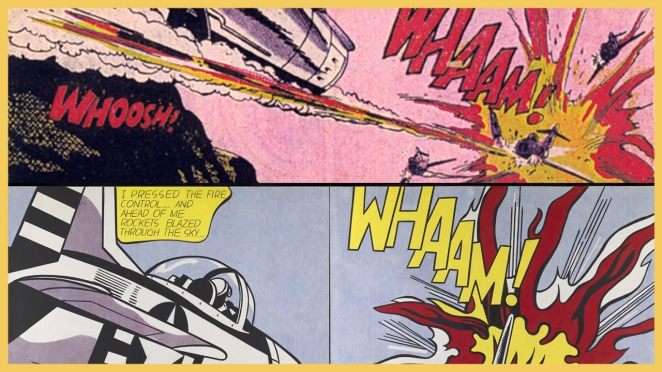
UP: Russ Heath, Original comic book panel from DC Comics' All-American Men of War No. 89 (Feb. 1962)
DOWN: Roy Fox Lichtenstein Whaam! (1963) https://en.wikipedia.org/wiki/Whaam!
The debate over the ethics of Lichtenstein's work raises larger questions about the nature of authorship and ownership in art. While Lichtenstein's paintings may have been based on pre-existing images, they were nonetheless transformed through his use of different materials, colors, and techniques. Some argue that this transformation is enough to justify his appropriation, while others contend that he should have acknowledged the original sources of his inspiration more explicitly.

III. Richard Prince and Appropriation Photography
Another example of appropriation in art is the work of Richard Prince. Prince is an American artist who gained notoriety in the 1980s for his use of rephotographed advertisements. Prince would take ads from magazines and other commercial sources, crop and recontextualize them, and then present them as his own works of art.
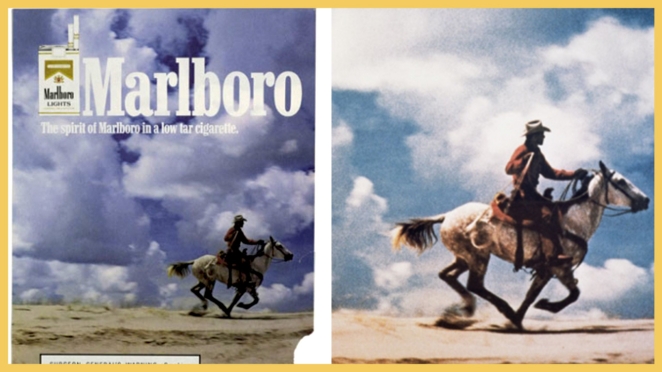
https://www.guggenheim.org/teaching-materials/richard-prince-spiritual-america/cowboys
However, like Lichtenstein, Prince's work has been criticized for appropriating the work of others without proper attribution or compensation. Some of his most famous works, such as the "Untitled (Cowboy)" series, were based on images taken from Marlboro cigarette ads. Critics have argued that Prince's appropriation is not only unethical but also perpetuates the very systems of power and exploitation that he seeks to critique.
To quote in his own words: "The pictures I went after, “stole,” were too good to be true. They were about wishful thinking, public pictures that happen to appear in the advertising sections of mass-market magazines, pictures not associated with an author…It was their look I was interested in. I wanted to re-present the closest thing to the real thing."

IV. Jeff Koons and the Controversial Appropriation of Banality
Jeff Koons is an American artist who rose to prominence in the 1980s with his series of stainless steel sculptures, such as the famous "Rabbit" and "Balloon Dog". Koons is known for appropriating imagery from popular cultures, such as toys, household objects, and pornography, and elevating them to the status of high art. His work has been controversial due to accusations of plagiarism and lack of originality.

LEFT: Art Rogers, Puppies, 1985 © Art Rogers. RIGHT: Jeff Koons, String of Puppies, 1988 https://designobserver.com/feature/art-rogers-vs-jeff-koons/6467 https://en.wikipedia.org/wiki/Rogers_v._Koons
One of Koons' most controversial works is "String of Puppies", a sculpture of a chain of ten cast porcelain puppies that he created in 1988. The sculpture was accused of being a blatant copy of a porcelain figurine produced by the German company Rosenthal, and Koons was sued for copyright infringement. Although Koons denied the allegations, he eventually settled the case out of court and paid an undisclosed sum to Rosenthal.
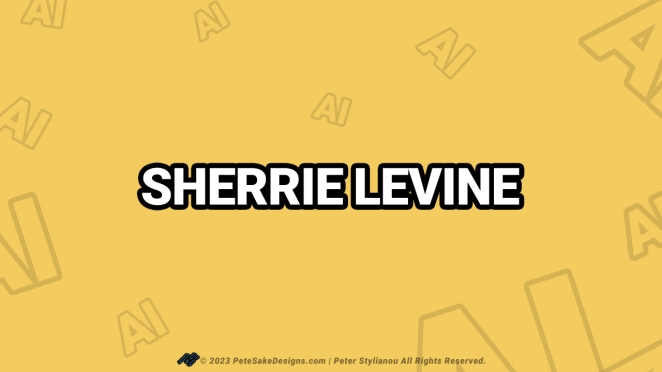
V. Sherrie Levine and the Power of Repetition in Appropriation Art
Sherrie Levine is an American artist who gained fame in the 1980s for her photographs of iconic images, such as those by Walker Evans and Edward Weston, which she appropriated and re-photographed. Levine's work raises questions about the value of originality and authorship and challenges traditional notions of authenticity and representation.
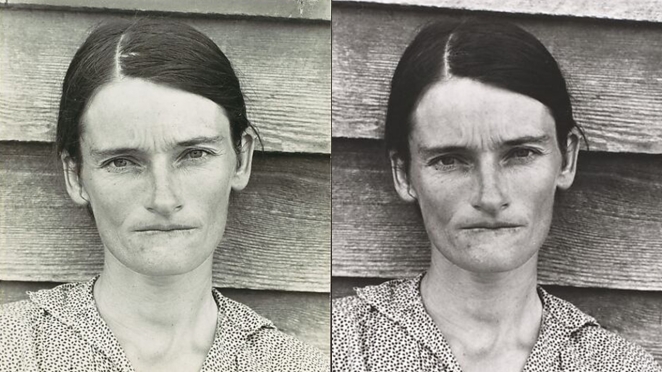
RIGHT: Alabama Tenant Farmer Wife Walker Evans American (1936) https://www.metmuseum.org/art/collection/search/284685 LEFT: After Walker Evans: 4 Sherrie Levine American (1981) https://www.metmuseum.org/art/collection/search/267214
Levine's most well-known series of works are her rephotographs of photographs by famous photographers such as Walker Evans and Edward Weston. Her work "After Walker Evans" (1981), which consists of photographs of Evans' famous "Let Us Now Praise Famous Men" series, has been criticized for being little more than an act of plagiarism.

VI. Andy Warhol and the Celebration of Consumer Culture in Pop Art
Andy Warhol was an American artist who is widely regarded as one of the most important figures of the Pop Art movement. Warhol's work often involved appropriating images from popular cultures, such as Campbell's soup cans, Marilyn Monroe, and Elvis Presley, and turning them into works of art. Warhol's use of appropriation challenged the traditional idea of what constituted art, and his work continues to be influential to this day.

LEFT: The original 1953 publicity photo | RIGHT: Marilyn Diptych, 1962 https://en.wikipedia.org/wiki/Marilyn_Diptych
Warhol's famous series of screenprints of Marilyn Monroe, created in 1962, was based on a photograph by Gene Korman that was used in a promotional campaign for the movie "Niagara". Warhol appropriated the image and added his own artistic touches, but he was accused of plagiarism by critics who claimed that he was merely copying a pre-existing image.
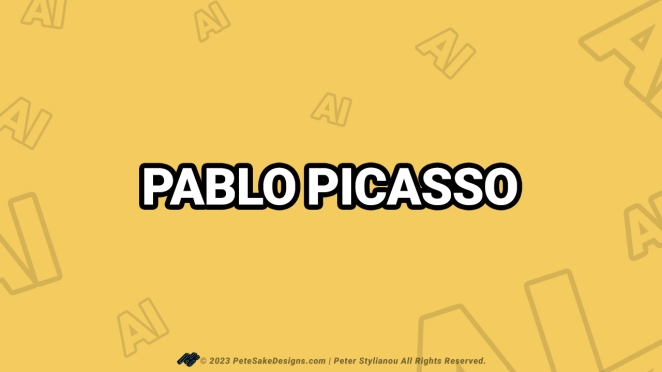
VII. Pablo Picasso and the Cubist Revolution: Appropriation as Innovation
Pablo Picasso was a Spanish artist who is widely regarded as one of the greatest and most influential artists of the 20th century. Picasso's work spanned a wide range of styles, from the early Blue and Rose periods to the Cubist and Surrealist movements. Picasso's use of appropriation was often seen in his Cubist works, where he incorporated found objects, such as newspaper clippings and sheet music, into his collages and paintings.
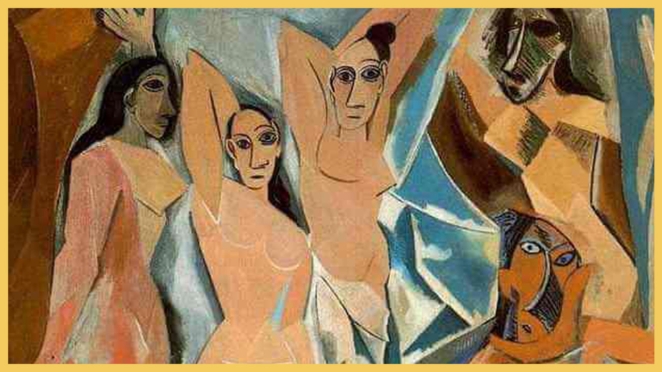
Les Demoiselles d'Avignon (1907) https://en.wikipedia.org/wiki/Les_Demoiselles_d%27Avignon https://www.moma.org/collection/works/79766 https://www.theguardian.com/artanddesign/2006/mar/15/art
Picasso's work continues to be celebrated for its innovation and groundbreaking contributions to the history of art. One of Picasso's most famous works, "Les Demoiselles d'Avignon", which he painted in 1907, was influenced by African art and the work of other modernist artists, such as Paul Cézanne.
While Picasso's use of appropriation was not necessarily seen as plagiarism in his time, some critics have accused him of appropriating the work of other artists without giving them proper credit.
AI Art: The Ultimate Form of Artistic Appropriation?
The use of AI in art, specifically in the realm of appropriation, is a groundbreaking development that raises questions about authorship and originality. By processing vast amounts of data, AI takes the process of artistic appropriation to new heights. However, it is essential to consider the ethical implications and ensure that regulations are in place to prevent misuse and exploitation.
Despite this, the use of appropriation in art is not new, and artists have been borrowing and referencing each other's work for centuries, building upon ideas and challenging norms. As we continue to navigate this evolving field, it is crucial to maintain ethical standards and respect the work of other artists while embracing the possibilities of AI technology.

BONUS Picture| LEFT: Original Mona Lisa vs RIGHT MONA LISA BY AI https://en.wikipedia.org/wiki/Mona_Lisa https://stability.ai/about
Artificial intelligence may be the new "palette" in town, but let's not forget to "brush up" on our ethical considerations as we paint the future of AI art.
Thanks for reading and keep creating!
"Oh For Pete's Sake"
Peter Stylianou
-
SOURCES:
Header image by Eylul Duranagac Alıcı
Art Appropriation
https://www.tate.org.uk/art/art-terms/a/appropriation
https://www.tate.org.uk/art/art-terms/a/appropriation
https://www.moma.org/learn/moma_learning/themes/pop-art/appropriation/
Roy Lichtenstein
https://en.wikipedia.org/wiki/Whaam!
Prince, Richard. "Untitled (Cowboy)". 1989. Photograph
https://www.metmuseum.org/art/collection/search/283742
https://www.guggenheim.org/teaching-materials/richard-prince-spiritual-america/cowboys
Koons, Jeff. "String of Puppies". 1988. Sculpture
https://designobserver.com/feature/art-rogers-vs-jeff-koons/6467
https://en.wikipedia.org/wiki/Rogers_v._Koons
Levine, Sherrie. "After Walker Evans: 1-22". 1981. Photographs
https://www.metmuseum.org/art/collection/search/284685
https://www.metmuseum.org/art/collection/search/267214
Warhol, Andy. "Marilyn Diptych". 1962. Silkscreen
https://www.moma.org/collection/works/79809.
Picasso, Pablo. "Les Demoiselles d'Avignon". 1907. Painting.
https://www.moma.org/collection/works/79766.
https://www.theguardian.com/artanddesign/2006/mar/15/art




